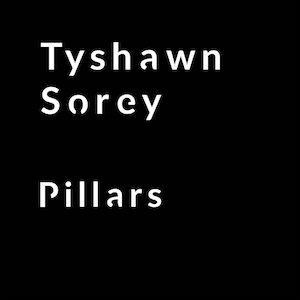Label: Pi Recordings, 2025
Personnel - Steve Lehman: alto saxophone; Vijay Iyer: piano, Fender Rhodes; Tyshawn Sorey: drums.
Fieldwork, a hard-charging contemporary jazz trio of ingenious, top-tier musicians, improvisers, and bandleaders, returns with its fourth album. Alto saxophonist Steve Lehman dazzles with tidal attacks that shift in and out of focus; pianist Vijay Iyer sculpts into the open field with vaulting textures and patterns in his deep-focus comping; and drummer Tyshawn Sorey powers the music forward like a rhythmic engine, keeping everything on the edge.
Iyer’s “Propaganda” opens with raw inspiration, driven by the tart angularity of fragmented saxophone lines and propelled by intricate, accelerated drum work. The piano’s agility shines across registers. Also penned by Iyer, “Evening Rite” thrives with buoyant gaiety and a magnetic pulse, while “Fire City” brims with feral lyricism and saturated sound, its bittersweet dissonances ultimately resolving into melodic consonance.
Each piece rivets, with the trio pouring sweat-filled, bruising passion into music that disrupts traditional jazz forms. Perplexing mathematical tangles surface in Lehman’s “Embracing Difference”, where the saxist works closely with Iyer while Sorey grooves with rampant impulsivity. Odd meters and hectic lines create a sound at once pugilistic and balletic. “Domain” follows enigmatic paths of cinematic grandeur, with Lehman soaring into the upper register with laser-like precision over fertile, odd-metered terrain.
Iyer adds Rhodes on two selections: Lehman’s “Fantóme”, which tests the trio’s improvisational powers, and his own “The Night Before”, a rare reprieve from cathartic intensity—melodic, harmonically radiant, and ballad-adjacent. Between them sits the high-wire “Thereupon”, where shifting meters and speed variations play a central role.
Fieldwork’s advanced musical language continues to carve out a singular path of boundless creativity. Probing the enigmatic edges of groove, their inventive oddities reward close listening, where febrile detail emerges at every turn. Like its predecessors, Thereupon is a must-have.
Favorite Tracks:
01 - Propaganda ► 02 - Embracing Difference ► 05 - Domain


















